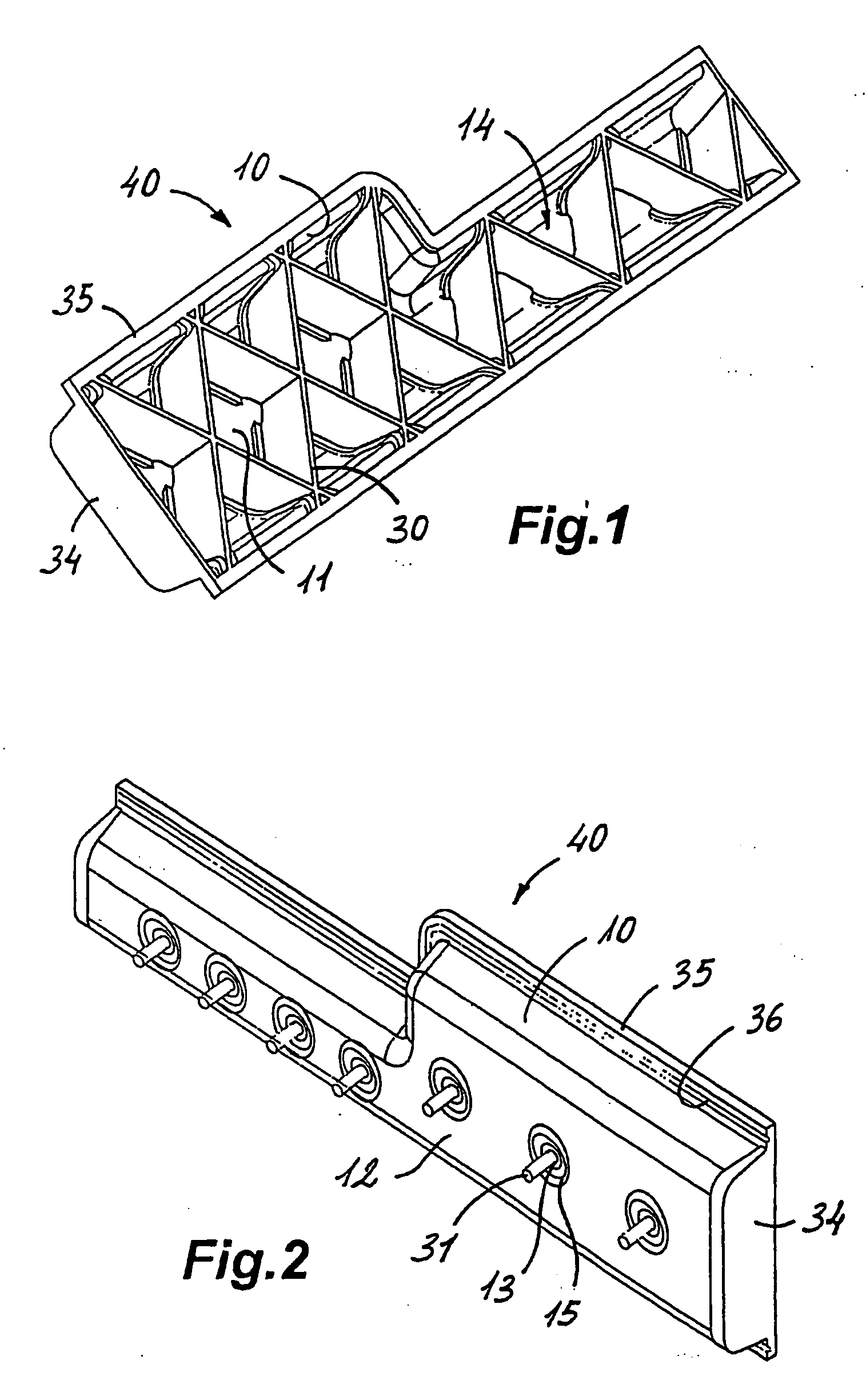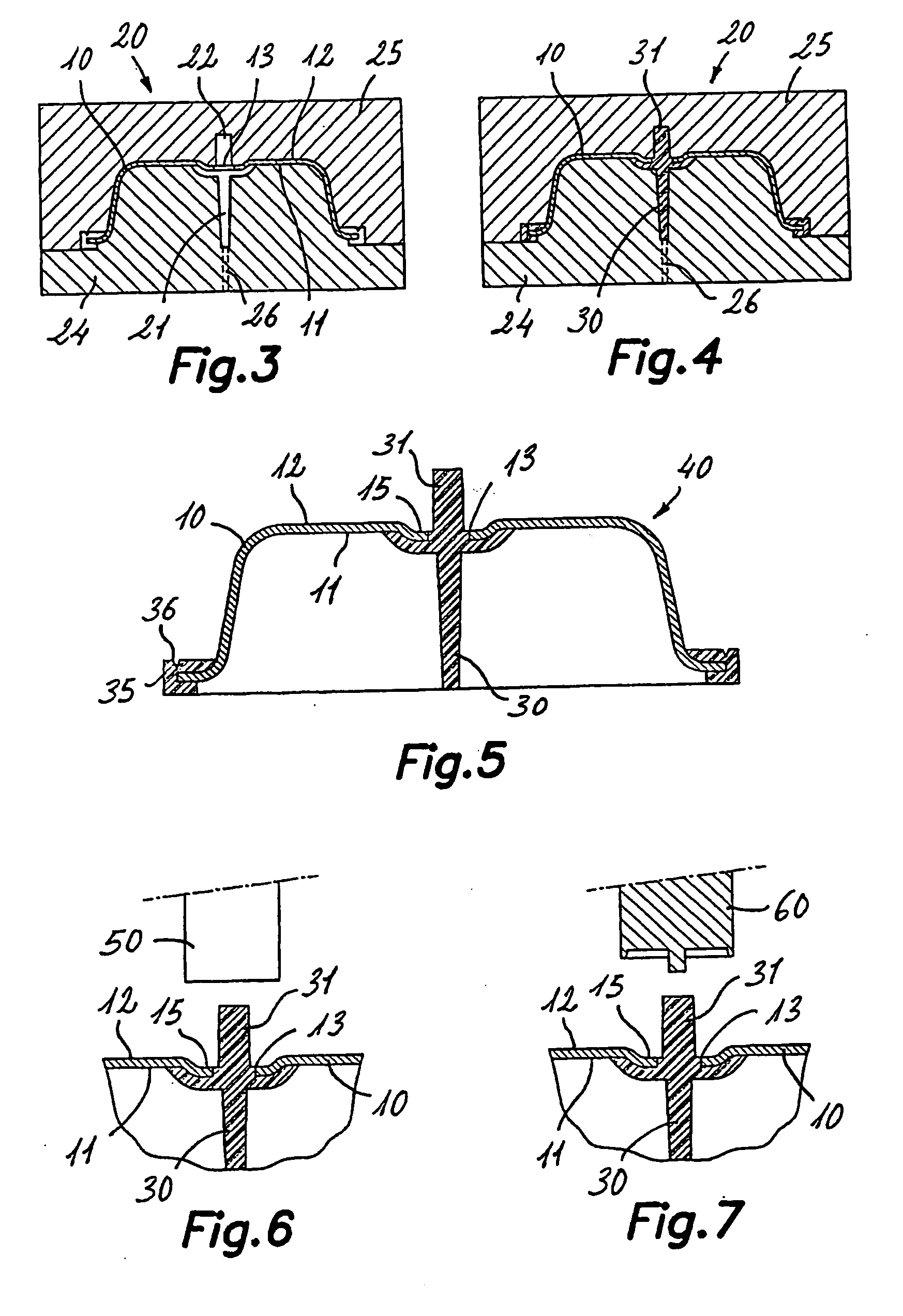Method for the production of a structural part comprising a rigid material and a plastic material, and structural composite part thus obtained
a technology of rigid materials and composite structural parts, which is applied in the field of manufacturing a composite structural part of a rigid material and a plastic material, can solve the problems of separating plastic parts, needing to produce, store and handle plastic material parts separately, and connecting both parts of different materials, etc., to achieve convenient recycling and easy operation.
- Summary
- Abstract
- Description
- Claims
- Application Information
AI Technical Summary
Benefits of technology
Problems solved by technology
Method used
Image
Examples
Embodiment Construction
[0035] First in reference to FIG. 1, the composite structural part of a rigid material and a plastic material is generally designated with reference number 40, and it comprises a plate part 10 of a rigid material, formed by means of a deep-drawing process, whereby it generally comprises a concavity 14 next to a first inner side 11, and a second convex side 12. A series of holes 13 (FIG. 2) extend between said first and second sides 11, 12. Advantageously, depressed areas 15 are formed around the holes 13 in the second side 12 of the plate part 10. Housed inside said cavity 14 are a plurality of reinforcing ribs 30 of plastic material formed by injection on said first side 11 of the plate part 10. Said reinforcing ribs 30 are relatively thin and form a framework designed to provide desired rigidity and strength to the plate part 10, which is also relatively thin. To that end, the reinforcing ribs 30 are connected to the plate part 10 at different discrete connection points by means o...
PUM
| Property | Measurement | Unit |
|---|---|---|
| flexural breaking strength | aaaaa | aaaaa |
| flexural breaking strength | aaaaa | aaaaa |
| flexural breaking strength | aaaaa | aaaaa |
Abstract
Description
Claims
Application Information
 Login to View More
Login to View More - R&D
- Intellectual Property
- Life Sciences
- Materials
- Tech Scout
- Unparalleled Data Quality
- Higher Quality Content
- 60% Fewer Hallucinations
Browse by: Latest US Patents, China's latest patents, Technical Efficacy Thesaurus, Application Domain, Technology Topic, Popular Technical Reports.
© 2025 PatSnap. All rights reserved.Legal|Privacy policy|Modern Slavery Act Transparency Statement|Sitemap|About US| Contact US: help@patsnap.com



